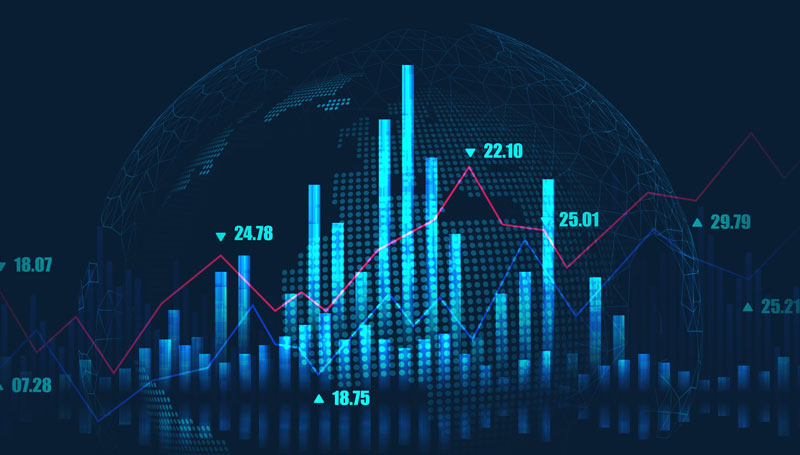

20.07.2020 – Special Report. The bulls can’t hear it anymore – but the warnings of a crash on the stock market are getting louder and louder. Especially the stellar performance of high-tech stocks makes the alarm sirens go off. One investor sees an “endgame”, others see the repetition of the dotcom bubble about 20 years ago or the financial crisis of 2008.
Nasdaq before the final phase
Clem Chambers made a particularly drastic statement on Forbes.com: “The Nasdaq is on its final run and is going vertical, a classic end of bubble move. This is trader heaven and turns into speculator hell for those who think that markets do grow to the skies.” Maybe the rally could last until Christmas or end tomorrow – if the Federeal Reserve doesn’t let the air out of the bubble, the final move could be fast. And then Chambers drew parallels with the dotcom crash of the 2000s: the government’s attempts to boost the economy meant that all the money was flowing straight into stocks. If the Nasdaq now takes off vertically, the final chapter of the process is initiated – and a destructive crash will destroy some of its assets. There is a danger that the current market will repeat the double blow of the 1930s.

Main Street versus Wall Street
Sven Henrich of NorthmanTrader.com also sounded the same note: “The gap between Main Street and Wall Street is widening. More than 50 million Americans are likely to become unemployed during the crisis. But the banks benefited from the government money. And the tech billionaires on the stock market witnessed their stocks continue to shoot up. Big tech, he said, had moved further away from the market than it had since the 2000 bubble.
Collective hallucination on the financial market
JPMorgan drew parallels with the 2009 crash, and in an interview with Bloomberg TV, Oksana Aronov, head of the Alternative Fixed Income Strategy department, said the Fed’s purchases had decoupled credit valuations from deteriorating fundamentals. European and American investors are trapped in a collective hallucination – market valuations are completely fabricated and synthetically created by central bank liquidity.
The manager warned of impending tax payments that could trigger a new crash. Even if there was a vaccine against Corona, she said, many small businesses would be without cash for months. Oksana’s conclusion: “Ultimately fundamentals will prevail”. The market is so overvalued that the Great Depression is just a walk in the park compared to the coming crash. Since the current financial system would then no longer exist, she advised investors to go for gold.
Huge valuation gap
Bank of America also made drastic statements with similar arguments. Chief Investment Officer Michael Hartnett wrote in his legendary “Flow Show” that never before has the gap between macro data and markets been greater – in other words, never before has the market been so fractured as it is now. This is mainly due to the global stimulus of 18.5 trillion dollars, and in particular the asset purchases by central banks amounting to 8.0 trillion dollars. And: “markets are up big because there was no Lehman”. So far, there have been no major bankruptcies, but the debt ratio compared to gross domestic product is much higher than in 2008.
Hartnett concluded: “the remarkable rally in credit and stocks may be closer to an end than a beginning” and “it is central banks, not bearish investors that end bubbles”. If the central bank issued the sell order for excessively rated bonds, this could lead to a final push for stocks before the collapse.
Warning from the Fed
And indeed, the Federal Reserve was implicitly sending out such a sell signal: “We may be seeing significant pricing disconnects between the market & economic fundamentals, which could result in sudden & sharp repricing,” said Federal Reserve Vice Chairman Randal Quarles. Before he joined the Fed, he was an investment banker at the Cynosure Group in Utah and The Carlyle Group in Washington, D.C.
We think: So maybe there will be a rude awakening soon. It’s striking that more and more professional investors are taking a warning. It looks like the attacks are getting closer. Traders and investors should not wipe these opinions lightly off the table. The Bernstein Bank wishes good luck!
Important Notes on This Publication:
The content of this publication is for general information purposes only. In this context, it is neither an individual investment recommendation or advice nor an offer to purchase or sell securities or other financial products. The content in question and all the information contained therein do not in any way replace individual investor- or investment-oriented advice. No reliable forecast or indication for the future is possible with respect to any presentation or information on the present or past performance of the relevant underlying assets. All information and data presented in this publication are based on reliable sources. However, Bernstein Bank does not guarantee that the information and data contained in this publication is up-to-date, correct and complete. Securities traded on the financial markets are subject to price fluctuations. A contract for difference (CFD) is also a financial instrument with leverage effect. Against this backdrop, CFD trading involves a high risk up to the point of total loss and may not be suitable for all investors. Therefore, make sure that you have fully understood all the correlating risks. If necessary, ask for independent advice.
